Cove Home Security System Review 2025
Cove isn’t perfect, but its simple setup, Eufy cameras, and professional monitoring service make it worth a look.

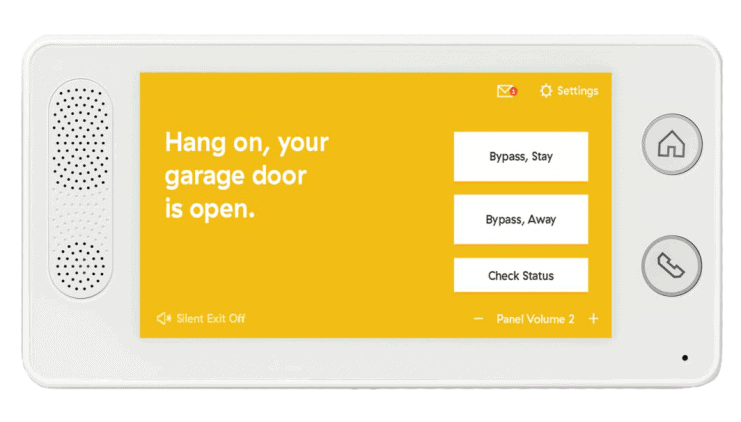
SafeHome.org may receive compensation from some providers listed on this page. Learn More
We may receive compensation from some providers listed on this page. Learn More
Cove isn’t perfect, but its simple setup, Eufy cameras, and professional monitoring service make it worth a look.


There are dozens of home security systems out there, but there are only a handful you can truly count on to keep you and your family safe no matter what. Based on our experience testing its system in the past, Cove is one of them. The company regularly appears on our list of the best home security systems, because it consistently delivers high quality at a fair price.
We don’t believe in taking anything for granted though. Just because Cove has been on our list for a while doesn’t mean it still belongs there. Only regular testing can determine that — especially now that Cove has refreshed its lineup. So, recently, we ordered a complete Cove package — hub, sensors, cameras, the works — and put the system through its paces. We tripped the alarm to see how loud it was. We tried all the Echo voice commands. We even stayed up late just to see how well the video doorbell’s night vision worked.
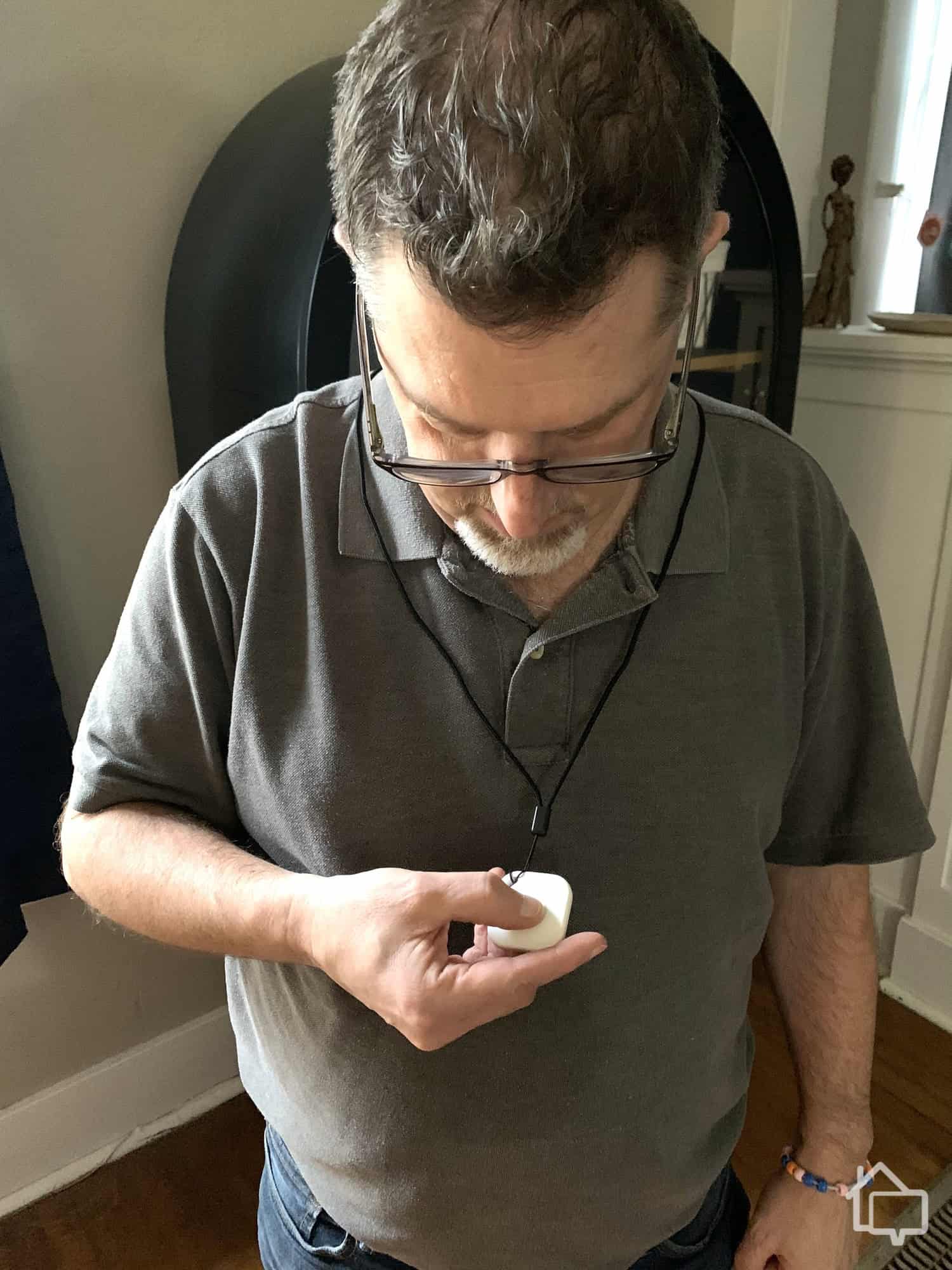
Here’s us tripping the panic alarm via Cove’s panic button.
The end result? Cove isn’t perfect, but no system is. We’ll tell you every aspect of the system we think could be improved. Ultimately, though, Cove proved to us once again that it deserves all the accolades we’ve showered on it in the past.
More on Rob and our SafeHome.org methodology →
Ordering a Cove system takes a little more effort than just wandering into a Best Buy and grabbing a few cameras off the shelf, but it’s a streamlined process. Maybe not quite as streamlined as Ring (see our complete Ring Alarm review), but definitely easier than, say, dealing with ADT. All we had to do was complete an online quiz about our living situation, and Cove recommended the ideal products for our security system.
You always have the option to take matters into your own hands by skipping the questionnaire though. As with other companies (see our SimpliSafe review), the hub and touch-screen keypad are required with every system, but there is a wide range of options when it comes to sensors and cameras.
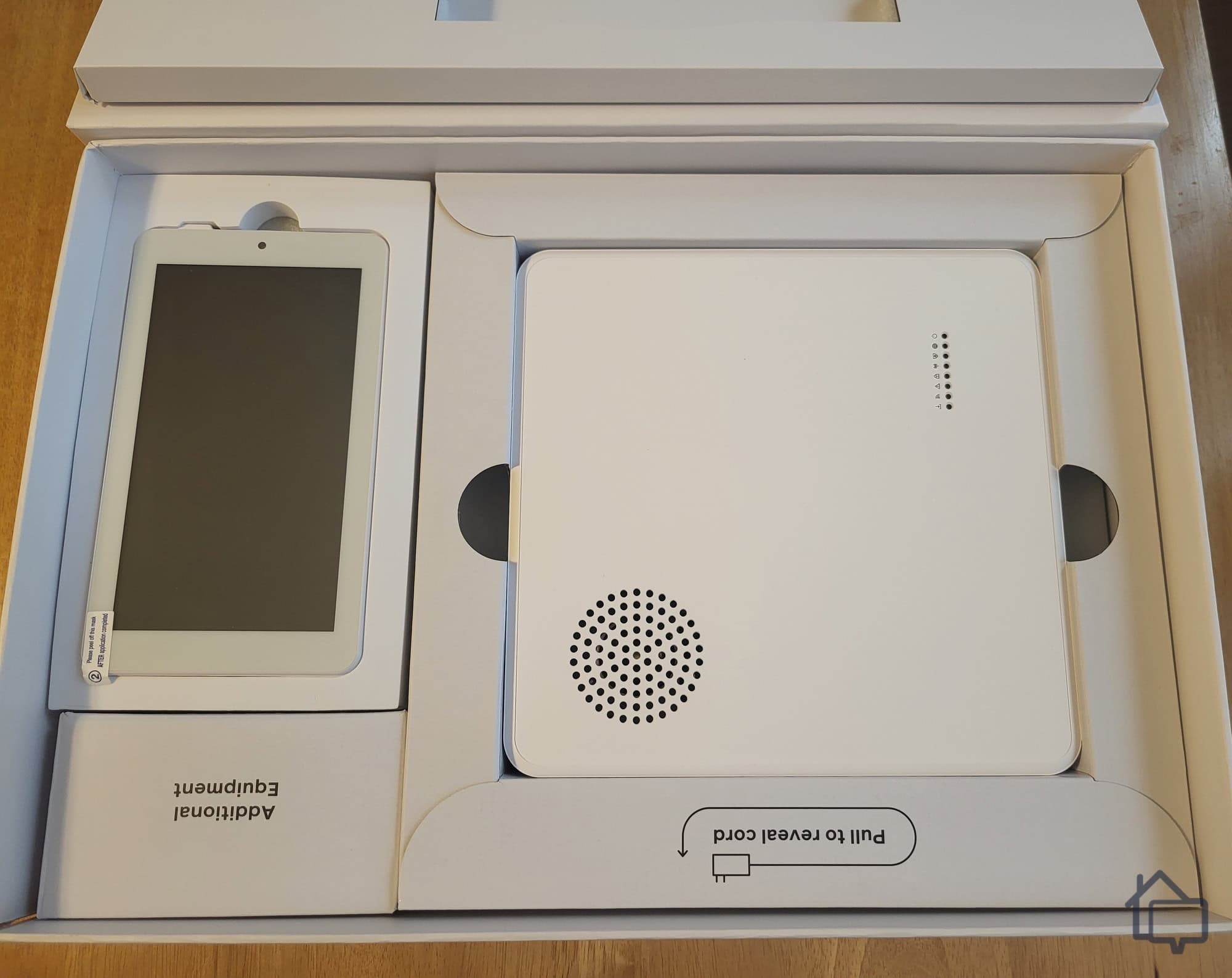
Our Cove package featuring the hub and touch-screen keypad.
Once you’ve settled on the equipment you need (more on these options later), Cove prompts you to choose a monitoring plan. Easy peasy. Cove also lets you name your equipment. That’s fun — we named our living room camera Daisy — but it also serves a practical function. When your package arrives, all the components are already connected to the central hub, and they’re all conveniently named so it’s easy to keep them organized.
We still weren’t done though. Once we’d paid for our system, Cove sent us an email and a text reminding us to set up our system portal. The portal lets us make decisions about our account, pay our bills, and get help with any questions we may have about our system. The text promised to keep us updated on when our equipment shipped. Pretty handy.
We were all smiles at this point. It seemed like Cove had absolutely everything under control. No wonder they also show up on our list of best self-installed home security systems.
Turns out, we smiled a bit too soon.
Getting the equipment to our house turned out to be a bit more trouble than the ordering process led us to believe. We waited for several days, but the shipping text never arrived. So we did the next logical thing: We logged in to our portal to check on it.
The good news is that we got a polite customer-service representative on live chat almost immediately. Unfortunately, she couldn’t tell us when our equipment might ship, only that the company would send a text when it does. We already knew that. It would be a few days, she said vaguely. She also mentioned that when it shipped, it would take five to seven days to arrive. Not what we wanted to hear, but what can you do? Maybe not surprising given that Cove doesn’t show up on our list of the best systems with great customer service.
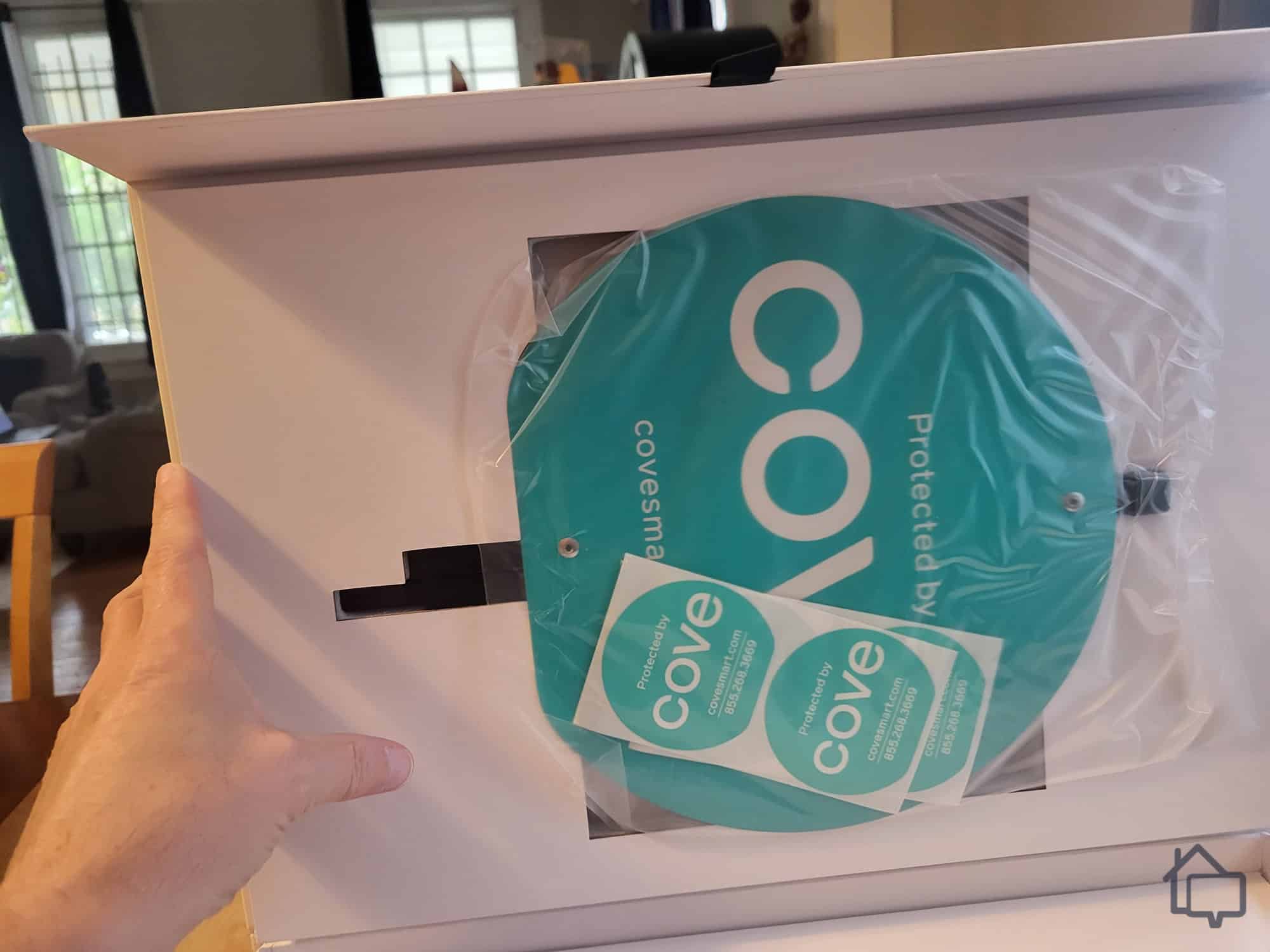
Our Cove package arrived, but we waited seven days from the time we placed our order.
We should point out that we ordered during the holidays, so maybe a bit of a delay is forgivable. Even so, when you’re purchasing home security equipment, you want it sooner rather than later. We even asked about expedited service — we were willing to pay extra to get everything a little faster — but we were told that’s not a thing Cove offers.
All’s well that ends well. Our little chat must have had an effect, because we got a text the very next morning that the package had shipped. It arrived in two days rather than five — an impressive turnaround. The video doorbell we purchased was on back order, which we suspect is why the order hadn’t shipped in the first place. But, again, it’s the holidays. These things happen. Ultimately, we give Cove high marks when it comes to organization, even if the company fumbled a bit in its execution.
Everything, sans video doorbell, arrived via UPS in a single, nondescript, brown box. Inside was a Cove box with everything neatly packaged inside. When we say neatly packaged, we mean neatly packaged. Not only was every sensor and every camera tucked away in its own little hidey-hole, but the box cover doubled as a set of picture instructions to help us get started setting up our system. That’s efficiency.
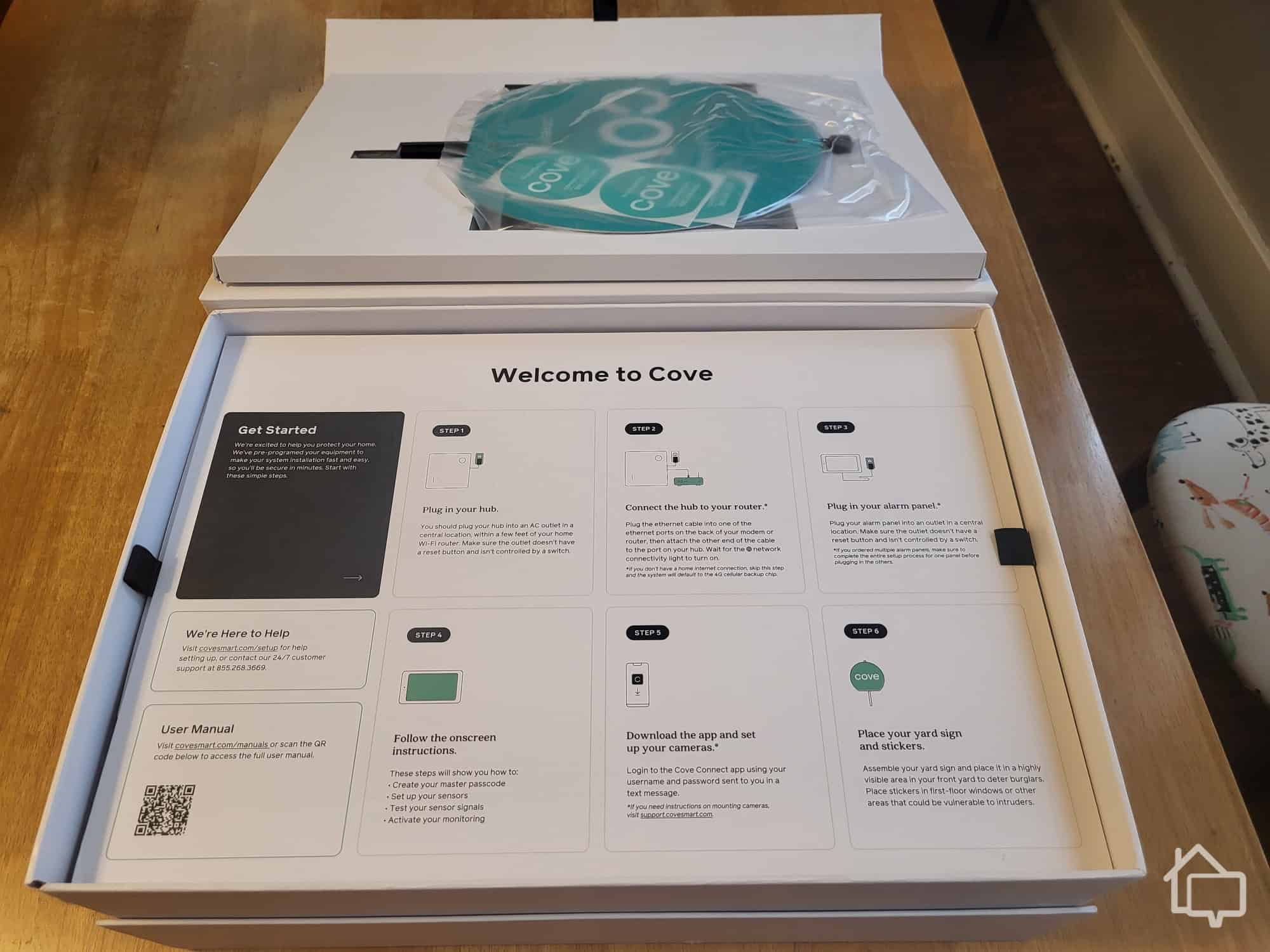
After opening the package, this set of picture instructions welcomed us and helped us get started.
We haven’t come across any other system that makes installation quite as simple and straightforward as Cove does. There just wasn’t any way to make a mistake. Cove recently began offering professional installation options starting at $129, but trust us — you won’t need help.
Sensor installation was primarily peel-and-stick, but there were options in some cases for more permanent mounting. The smoke detector we ordered, for instance, needed some basic handyman work. We had to mark where we wanted it to go with a pencil and then turn a couple of screws to get the mounting hardware in place. Nothing we couldn’t handle. We rent, though, and we live in a historic home, so peel-and-stick was the better option in most cases since it minimized damage to our 110-year-old walls.
Related: Can Tenants Install Home Security Cameras?
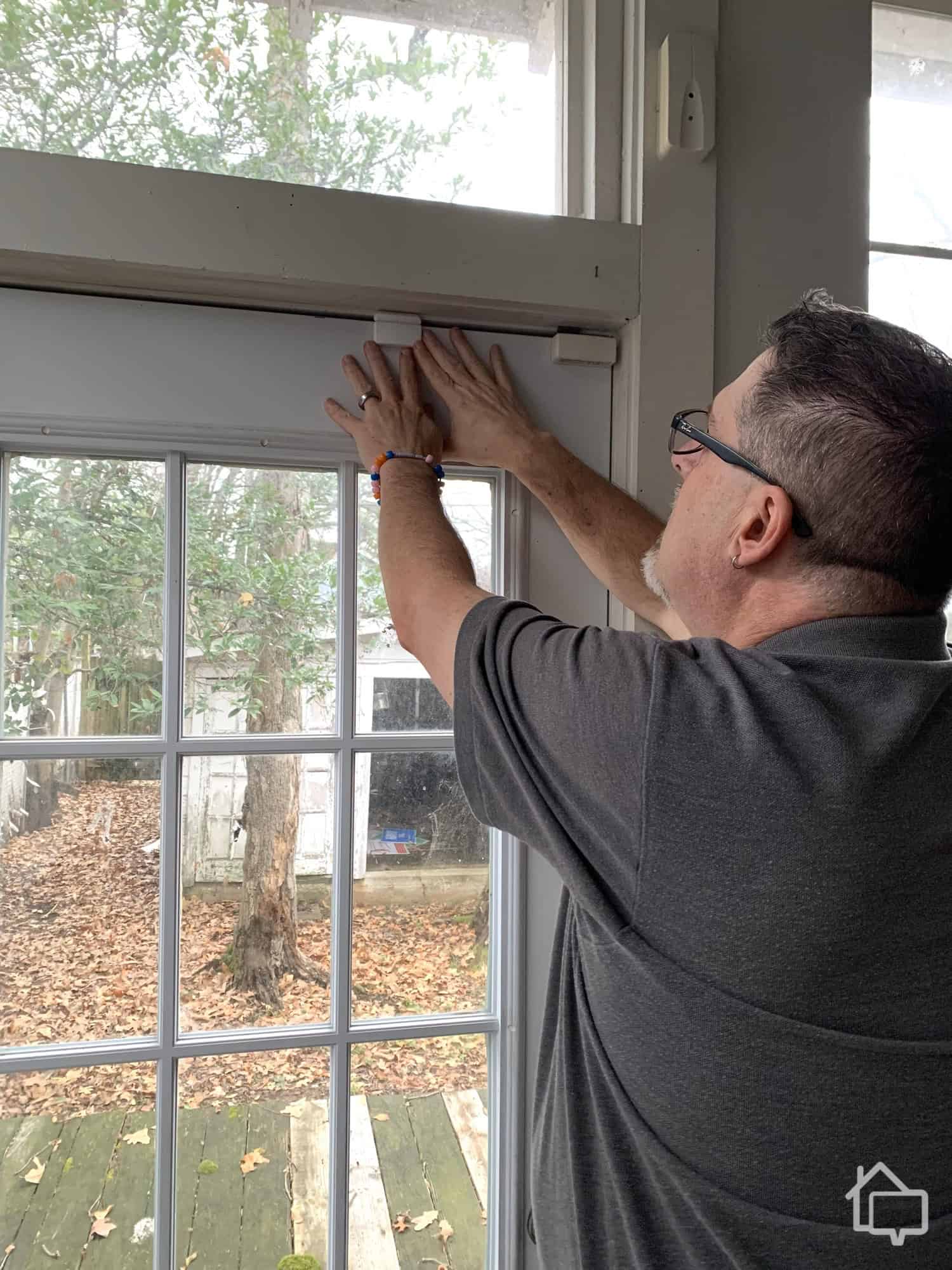
Here’s us mounting the window sensor. You can see how much smaller it is than the older window sensors we have.
Everything worked like a dream, and by the time the control panel directed us to do a final check on the sensors, that big smile had started to creep onto our faces again.
There was a bit of a hang-up with system testing. According to the touch-screen panel, the monitoring center was supposed to call us once we got our system up and running. That didn’t happen. We wound up calling them and had to wait on hold for about 20 minutes before we finally got to talk to a person.
And then we started on the cameras.
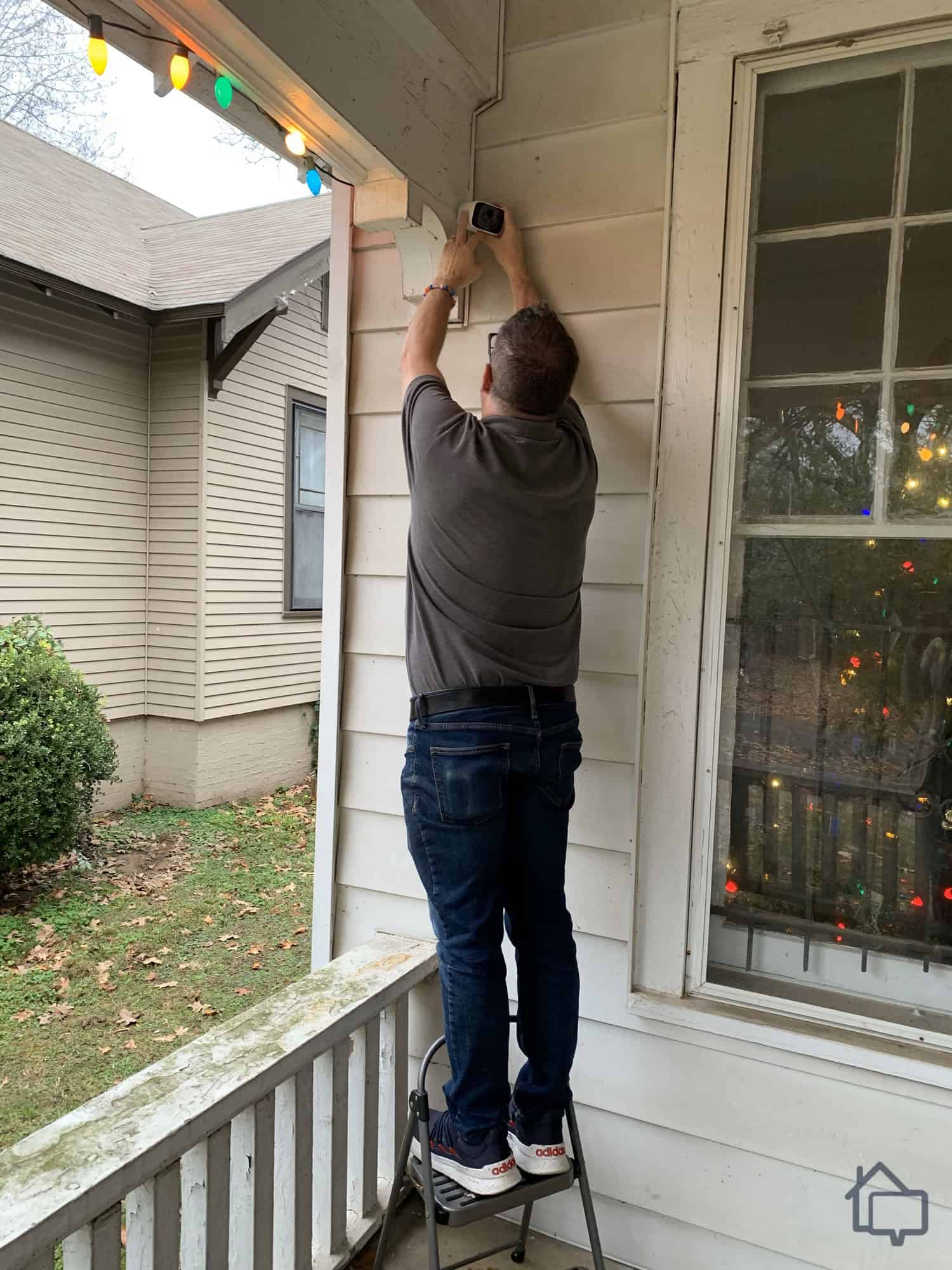
Next up, we set up the security cameras, which took a bit more work than the Cove sensors.
Cove doesn’t manufacture its own cameras, choosing instead to offer Eufy devices. Before we go any further, we should say that these are great cameras. Check out our review of Eufy’s video doorbell, for instance. The problem is that because Cove doesn’t make the devices, it can’t preprogram them the way it does its touch screen and sensors. That means the installation process is a bit trickier.
Camera installation is supposed to go through the Cove app. We have no complaints about the app itself. It’s easy to find the camera installation button, and, once you push it, the app walks you through the entire process. Only the process didn’t work. Over and over again, the app told us that it couldn’t locate our devices. We tried everything — and we mean everything. Moving the hub around. Moving the cameras around. At one point, we discovered that Cove cameras only work with a 2.4 GHz signal. Turns out, our router is dual band. It uses both 5 GHz and 2.4 GHz. So we spent a little time figuring out how to switch to the right band. Unfortunately, even that didn’t work.
Finally, two days later, we broke down and called the customer-service number — only to be told that the Cove app was currently having trouble with camera installation. Not trouble, as in it’ll be back up in an hour. Trouble, as in we don’t know when in the foreseeable future it might be working properly. We were told to install the cameras via the Eufy app instead.
Side Note: It’s not that it’s bad, but the Cove app is one thing the company can improve so it can better compete with other top brands. In the meantime, check out the best home security system apps we’ve tested, which all feature easily navigable interfaces and plenty of customizations.
To be fair, we should have called way sooner than we did. We can be stubborn about trying to figure things out on our own, and this time it cost us an extra couple of days. Even so, it would have been nice to know the installation system didn’t work before spending two days trying to figure out what was wrong.
Everything eventually worked out. It wasn’t ideal having to use two separate apps for a week, but by then Cove had worked out its app issues and we got the system to recognize our cameras. The video doorbell arrived around the same time, and just like that we had everything up and running. The holidays, right? Even so, getting everything up and running didn’t go quite as smoothly as we hoped.
For all the headaches we experienced during setup, we have zero complaints about Cove’s equipment quality. Everything is solidly built and works like a charm. Plus, we had lots of control over settings, which means we were able to get the system working just the way we wanted.
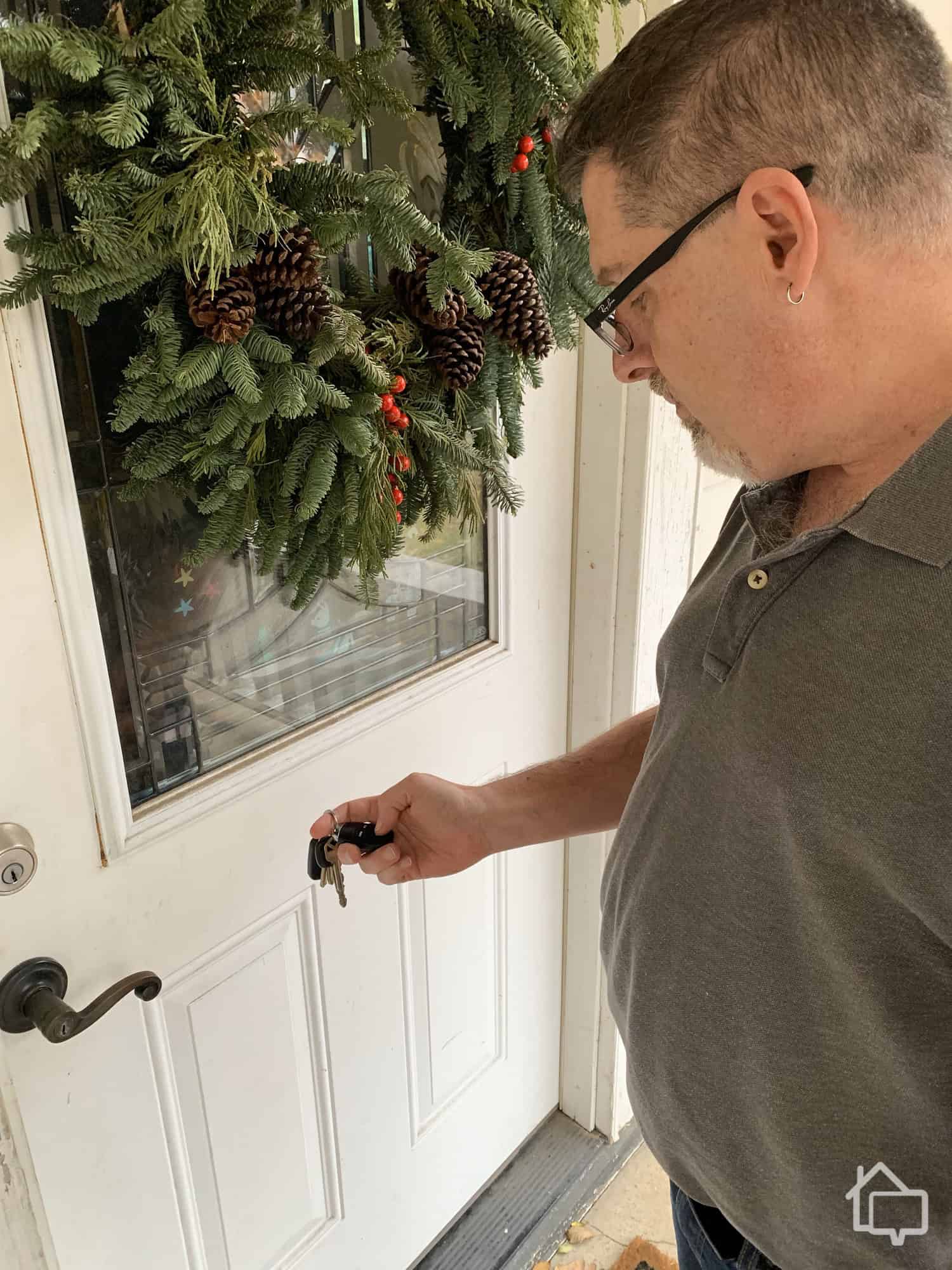
Once everything was set up, we started testing each component piece by piece — even the Cove key fob.
The hub is a hub — a flat, white, plastic box with lots of blinking lights that sits next to the router and connects the various pieces of the system. It’s reasonably unobtrusive and does its job, which is what you want in a hub.
We were far more impressed with the touch-screen control panel. As a starting point, it has some heft to it. Clearly, there is some sophisticated hardware inside. It’s also sleek, with a clever design that features a mount that doubles as a stand if you’re setting it up on a flat surface.
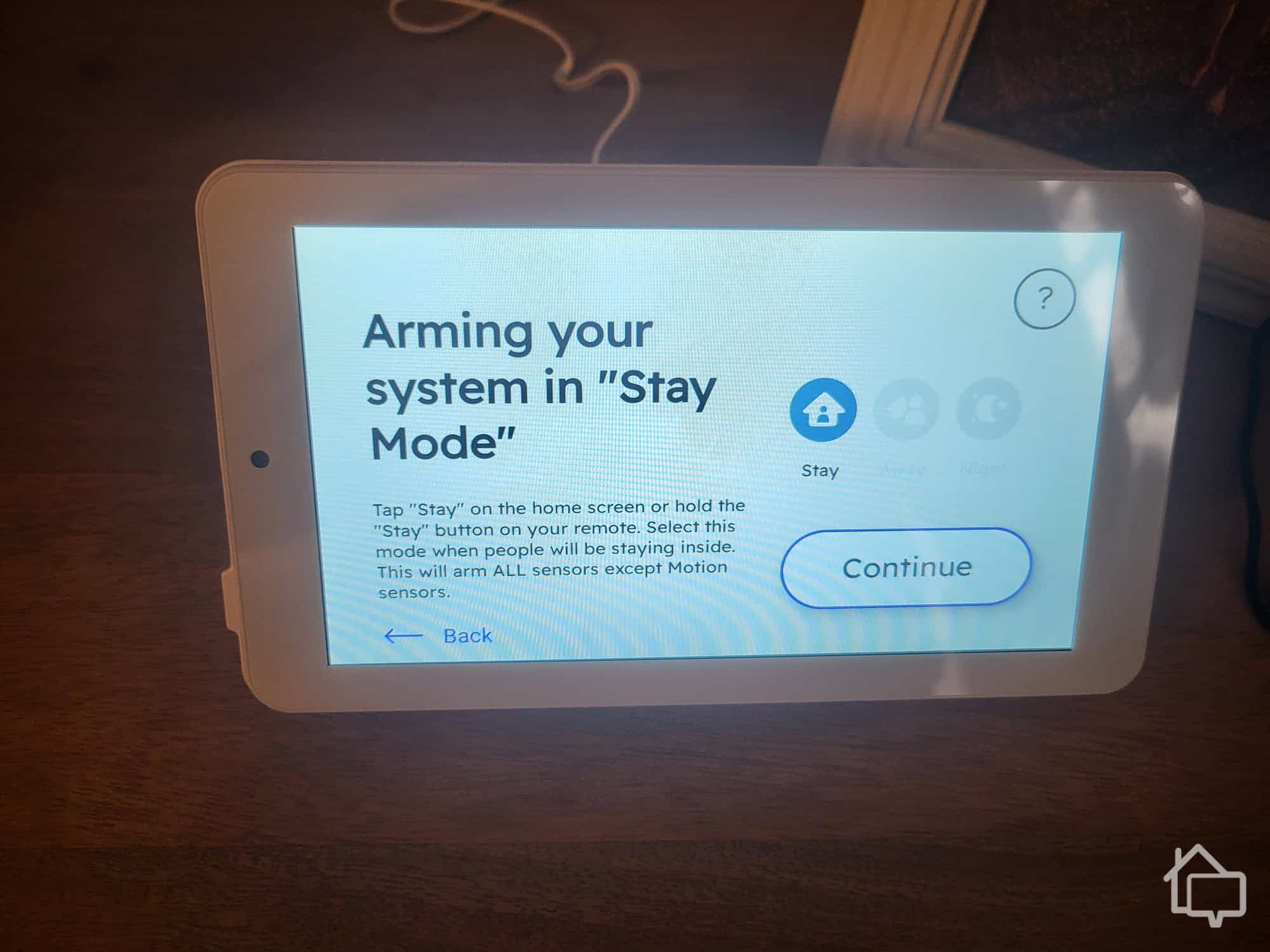
Controlling and managing the entire system was a breeze using the Cove touch-screen controller.
In terms of function, the hub gave us absolutely everything we needed to operate our system and keep track of our various sensors, but without overcomplicating the interface. Everything happens with a simple touch, and it’s easy to move among the four basic settings — Stay, Away, Night, and Unarmed. You can access camera feeds once you get them connected to the system, and it’s relatively straightforward to make settings adjustments.
The sensors had a nice weight to them that made us feel like they were substantial pieces of equipment. Yet Cove has managed to make them sleek and discreet too. They’re not going to ruin your home’s aesthetic, and, in all likelihood, guests won’t even notice they’re there. Peel-and-stick makes them easy to install, and they come with their names already assigned, which makes installation that much simpler.
Like most entry sensors, they’re magnetic. When the connection between the magnets breaks, they send a signal to the hub. If you’re home, you’ll get a friendly voice alert that your door is open. If you’re out and about, the alert is sent via a text message.
Cove says its window sensors work differently from its door sensors. They look and feel exactly the same as the door sensors, but who are we to quibble? The main thing is that they install just as easily as the door sensors, and they work just as reliably. Raise a window, get an alert.
The thing about window entry sensors is that they won’t work if a home invader decides to just break your window’s glass — and, let’s face it, that’s the more likely scenario. Enter the glass-break sensor. Cove’s glass-break sensors are simple square, white tiles you place on the wall opposite your windows. They listen for the particular frequency of breaking glass and let you know any time they pick it up. Like every other piece of equipment from Cove, they’re both sleek and sturdy — the perfect combination.
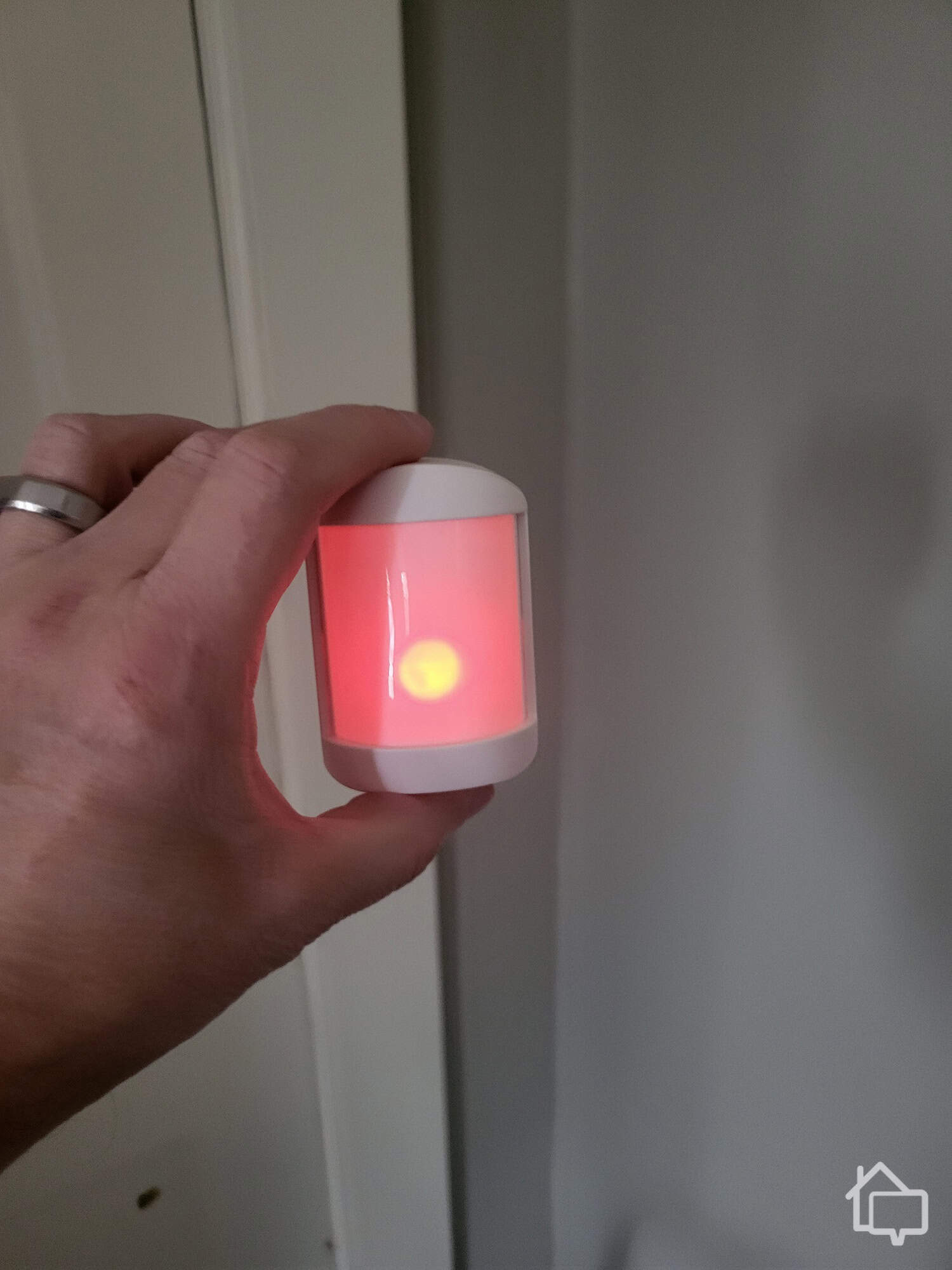
The Cove motion sensor lights up when it detects movement.
This is the one piece of Cove equipment that is a bit more lightweight. The motion sensors felt less solid and more plasticy. Those qualities, however, are actually part of how the device works. The plastic front, for instance, allows the sensor to see what’s happening in front of it and simultaneously allows us to see the red light that comes on when the sensor picks up motion.
Your home probably already has a smoke detector. Ours certainly has several — in the kitchen, the hallways, and the bedrooms. An off-the-shelf smoke detector is great for alerting you to potential fire hazards that happen when you’re at home. They’re designed to emit an ear-piercing alarm that can wake you from even the soundest slumber.
What do you do, though, if a problem comes up while you’re at work, or out to dinner, or getting your teeth cleaned? The advantage of having a Cove smoke detector is that you get an instant alert no matter where you happen to be. That means you can always get emergency services on site quickly, and that can be the difference between losing and saving your home.
A flood sensor can be a valuable piece of equipment for a number of reasons. We live in an older home, and we don’t always trust the pipes — especially in winter. A flood sensor ensures we’re protected if something bursts. The devices are great if you have older appliances — dishwashers, washers, and dryers — or if you just worry about flooding emergencies in general.
Call us Eufy fans. These little cameras come packed with features and offer tremendous value. With pan and tilt functions and the ability to zoom, the indoor models can literally capture everything happening in a room — a complete 360-degree view — and, with 2K resolution, it’s all crystal clear.
There’s night vision, so you won’t miss a thing no matter what time of day or night activity occurs. Plus, with sound detection, your camera can capture events even before someone enters the room. You can choose between triggered recording and continuous recording, and you don’t even have to worry about paying for a cloud storage plan. Footage saves right to your mobile device. All this for just $60.
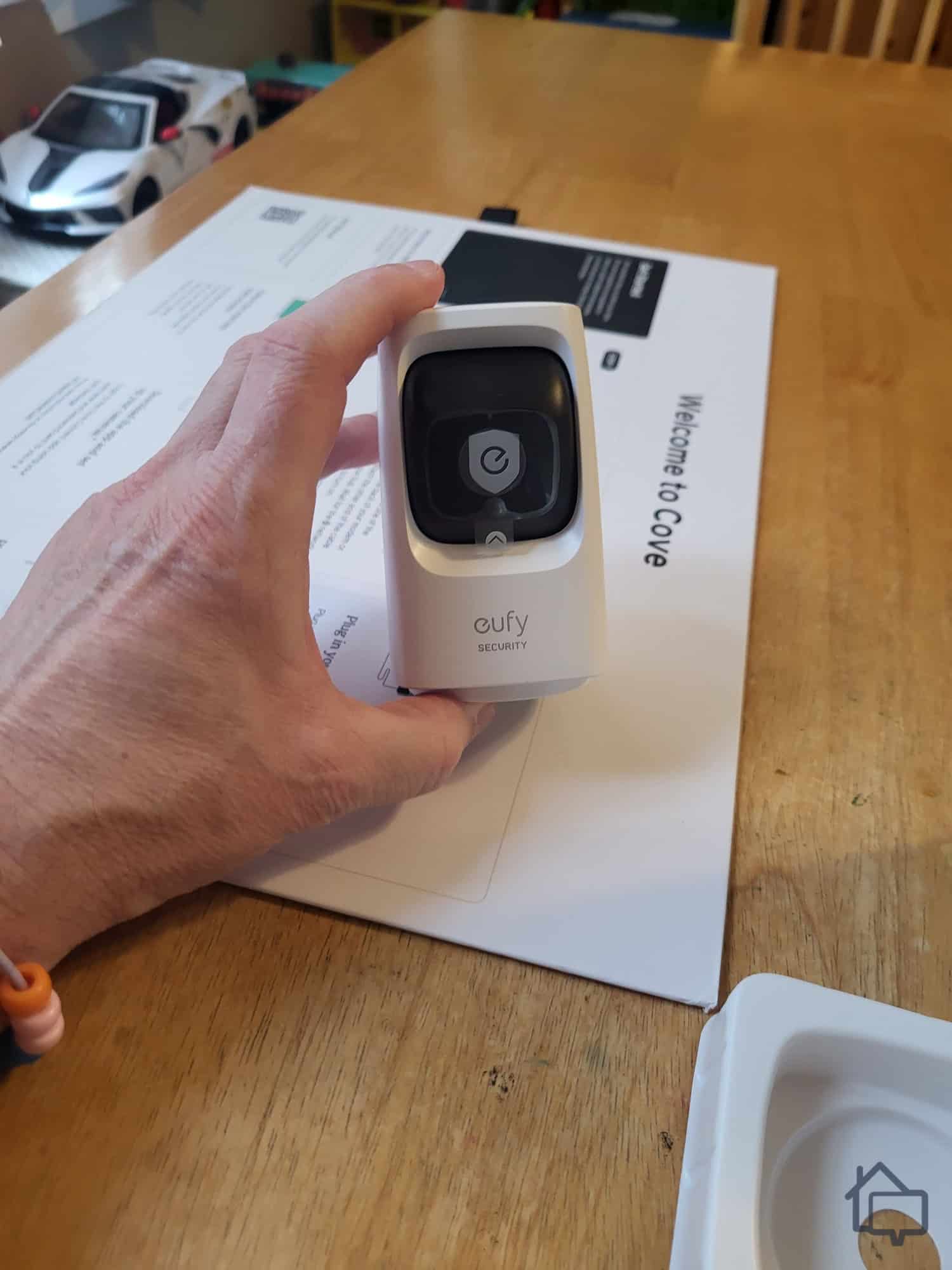
This small but mighty indoor camera pans and tilts to maximize its coverage area.
With indoor cameras, we always worry a little about privacy. When we shut down our Eufy indoor camera, it actually rotated to face the wall, so we knew no one could watch us stumbling through our evening yoga exercises.
We were equally impressed with the Eufy outdoor camera. It’s a little pricier at $130, but it’s a hardier device engineered to withstand the elements. It’s rated IP67, which means it’s dust-tight and can withstand immersion in freshwater up to a meter. Some of the extra money also goes into the solar panel, which comes standard and eliminates the need to change batteries. Install the camera as high up as you want — higher angles give you more coverage of your exterior — and you’ll never have to worry about getting back up on a ladder.
Comparison Shopping: Best Outdoor Security Cameras
The outdoor model doesn’t pan and tilt like the indoor version, but it features an adjustable mount so you can maximize what it sees. It offers not only night vision, but also infrared night vision. As with the indoor model, you can store all your footage on your own device.
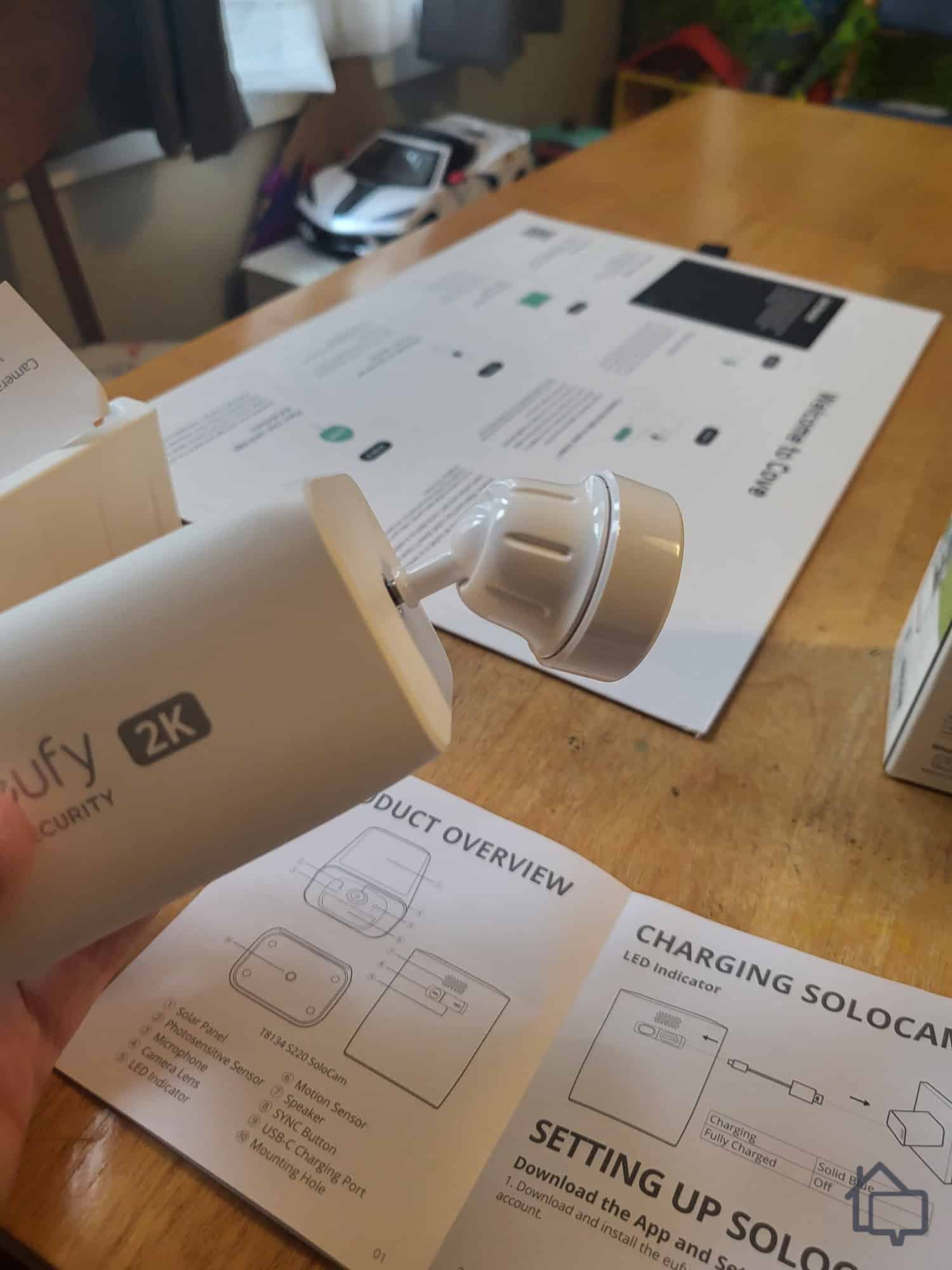
The outdoor camera’s mounting bracket may not look sturdy, but it held up pretty well.
Just a note: Outdoor cameras can work anywhere. We suspected we may have squirrels in the attic, so before we installed our camera outside we set it up in our rafters to see what we could see. Luckily, no squirrels. Yay! But then what are those noises we keep hearing? Now we have to worry about ghosts.
The Eufy video doorbell comes with all the same great features as the Eufy cameras, including 2K resolution, night vision capabilities, and two-way talk. It includes person detection, which means we didn’t have to worry about false alarms every time a car happened to drive by. It’s not IP-rated, but it is rated for temperatures down to -4 and up to 122 degrees Fahrenheit. And, of course, as a video doorbell, it sits right at the entrance to your home.
One of the nice things about the doorbell is that you have the choice of hardwiring it to replace your existing doorbell or relying on battery power. Either way, it comes with its own chime and storage device.
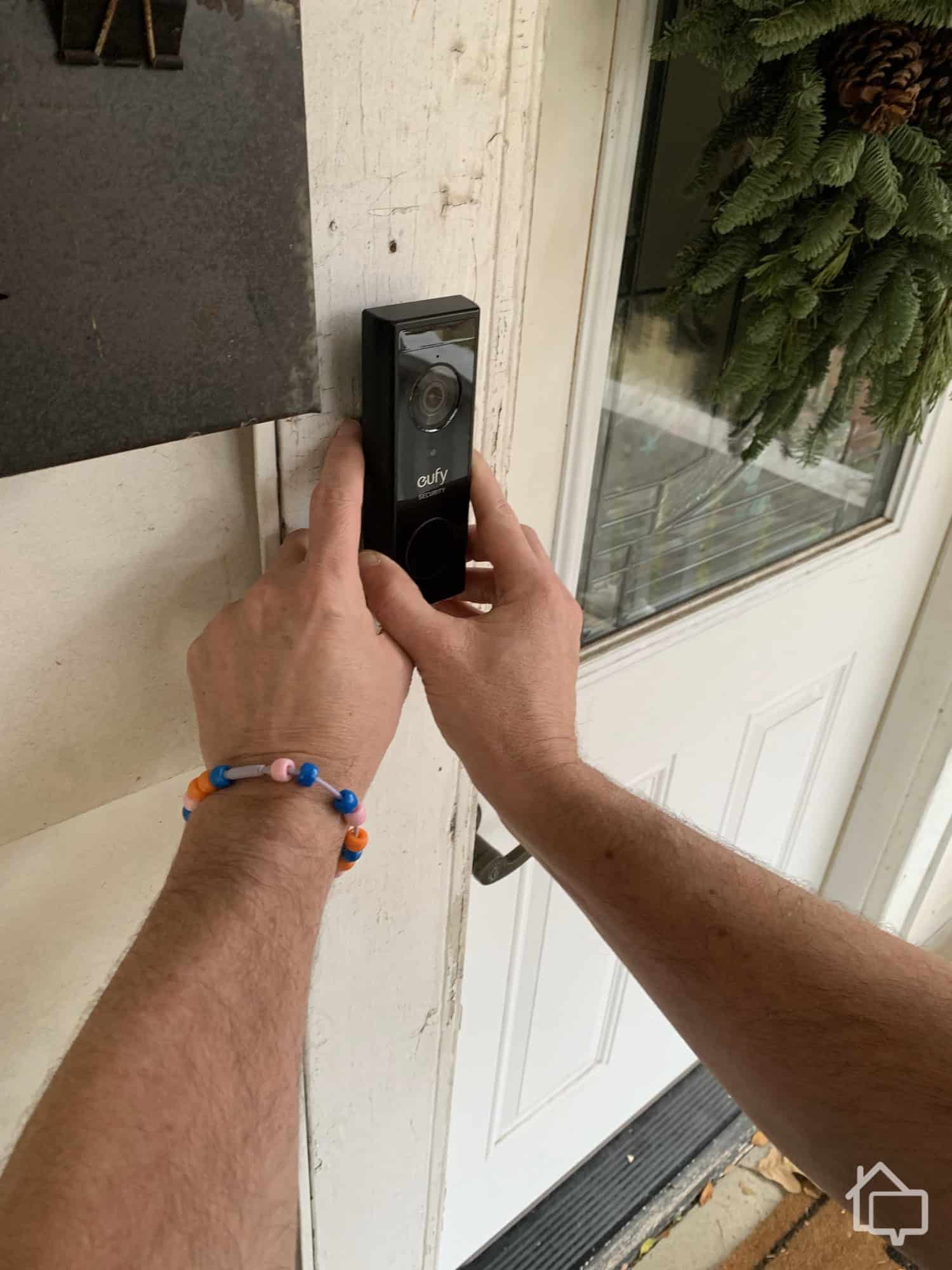
We had to wait a couple more days before it arrived, but it was easy to set up the Eufy video doorbell.
The entire Cove system is accessible via the Cove app, and you can make lots of adjustments depending on how you want to secure your home. For simple actions, such as turning the system on and off, you can also purchase a handy key fob. We liked having control over our system in our pocket, and it’s nice to be able to shut down the system before we open the front door. No more rushing to the control panel to try to get everything turned off before the alarm sounds.
We also purchased a panic button, just to see how Cove’s version of the device compares to other systems’. We didn’t really imagine using it, but when we had a plumber over to work on a leaky faucet, we kept it handy as added security. You never know, after all.
You always want to put up your sign. It lets anyone who may have eyes on your home know that you take security seriously. All yard signs do that, but Cove signs carry the added weight of the Cove name.
There are two Cove devices we didn’t try, but we have no doubt they are as sturdy as everything else the company produces.

Cove doesn’t provide self-monitoring options. If you purchase equipment, you’re basically locked into a professional monitoring plan. Here’s the thing though — you need a professional monitoring plan.
OK, DIY can save you a little money, but it’s just not as safe. Home invaders don’t strike when you’re sitting on your couch with your Cove app pulled up. They strike when you’re at the movies, or on vacation, or in the shower. While we were testing our system, we went out with friends to an escape room. Not really the ideal situation to try to deal with a home security alert. With a monitoring plan, though, we knew Cove would take care of any problems that came up.
A Closer Look: Best No-Contract Home Security Systems
FYI: If your home security system features an on-site alarm, you should check with local authorities as part of your installation process. Many municipalities require homeowners to register their systems. Registration also ensures emergency personnel will respond to alerts at your home.
Cove doesn’t require long-term contracts, so you can cancel service if you happen to come across a better deal from another company. And you get to choose between two plans.
Cove Basic provides 24/7 monitoring, alarm verification, and complete control over your system through the Cove app, all for just $19.99. That’s comparable to some of the more affordable monitoring plans out there, such as Ring’s Premium plan.
>> Read More: Ring Security System Cost & Pricing Plans
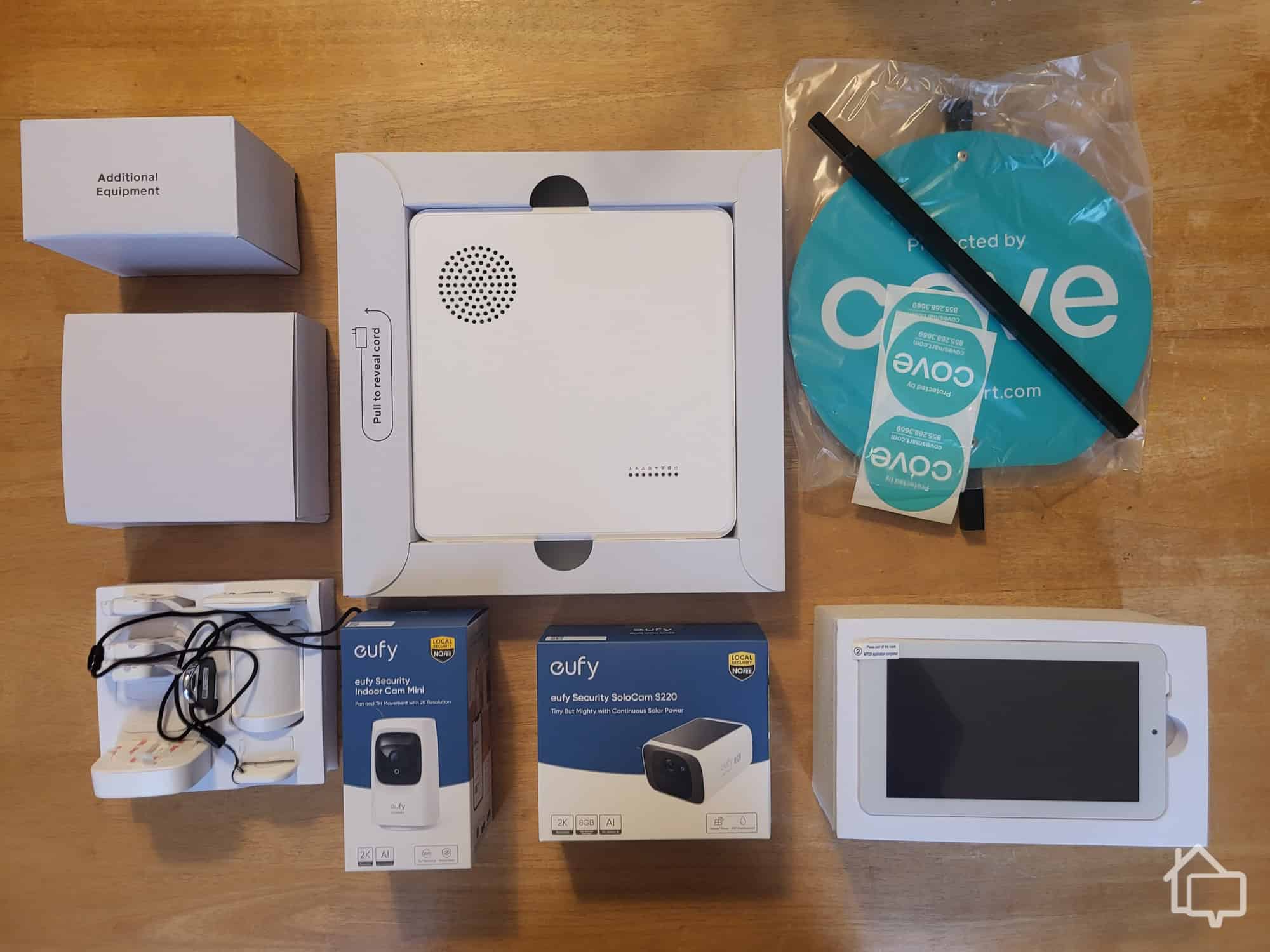
Cove’s monitoring covers all Cove equipment you have in your home, but we recommend the Cove Plus plan if you have security cameras.
We went with the Cove Plus plan, which includes camera support and complete integration with Alexa and Google Home. Plus, we got a lifetime equipment warranty. The Plus plan is an additional $10 a month, bringing the total to $29.99. That’s right in line with similar services from other companies. SimpliSafe’s newest plan is comparably priced, for instance, but we should note that SimpliSafe offers a few extras, such as video verification, that you won’t get with Cove.
The Bigger Picture: Cove vs. SimpliSafe
FYI: Quite frankly, no one can match SimpliSafe’s top monitoring plan. For $31.99, professional monitors actually review camera footage any time an alarm goes off, and they’re even trained to talk home invaders out of what they’re doing. For $49.99, this same feature is also available for outdoor security cameras.
Last, but certainly not least, let’s talk a little about Cove pricing. With any home security system, there are three basic costs to worry about: equipment, installation, and monitoring.
Installation was free. Cove now offers professional installation if you think you may need help, starting at $129. It’s possible to install an entire Cove system without ever picking up a screwdriver, though, so most customers will be better off going that route. We hardwired our doorbell and mounted our outdoor camera and still managed to be done with absolutely everything in under an hour.
On paper, Cove seems like a middle-of-the-road system. You can purchase packages that range from $410 to $1,169, which is comparable to what full-service companies such as ADT charge, but Cove is always running a sale. Right now, for instance, the company is having a holiday sale offering 70 percent off all equipment. That makes Cove systems far more affordable than ADT.
| Packages | Equipment | Retail price | Current sale price |
|---|---|---|---|
| Basic Guard DIY | 6 pieces | $410 | $124.99 |
| Essential Watch | 11 pieces | $579.99 | $149.99 |
| Advanced Security | 16 pieces | $739.98 | $249.99 |
| Premier Protection | 19 pieces | $899.97 | $299.99 |
| Fortress Elite | 24 pieces | $1,169.95 | $494.99 |
Premade packages are convenient if you aren’t sure what you need for your home security, but Cove also lets you put together your own package. That will usually save you money on equipment you don’t actually need. On paper, equipment prices are fairly ho-hum. If you catch Cove during one of its many sales, though, you can get some top-tier equipment at very reasonable prices.
| Equipment | Retail price | Current sale price |
|---|---|---|
| Hub | $150 | $45 |
| Touch-screen panel | $150 | $45 |
| Door sensor | $15 | $4.50 |
| Window sensor | $15 | $4.50 |
| Motion detector | $50 | $15 |
| Glass-break detector | $50 | $15 |
| Secondary siren | $150 | $45 |
| Smoke detector | $95 | n/a |
| Carbon monoxide detector | $95 | n/a |
| Flood sensor | $50 | $15 |
| Key fob | $30 | $9 |
| Panic button | $30 | $9 |
| Eufy indoor camera | $59.99 | n/a |
| Eufy doorbell camera | $99.99 | n/a |
| Eufy outdoor camera | $129.99 | n/a |
Cove lets you pay through Affirm, so you can spread the cost over four payments with no interest charges. In addition, you’ll have a full 60 days to try your equipment risk-free, and shipping is 100 percent free.
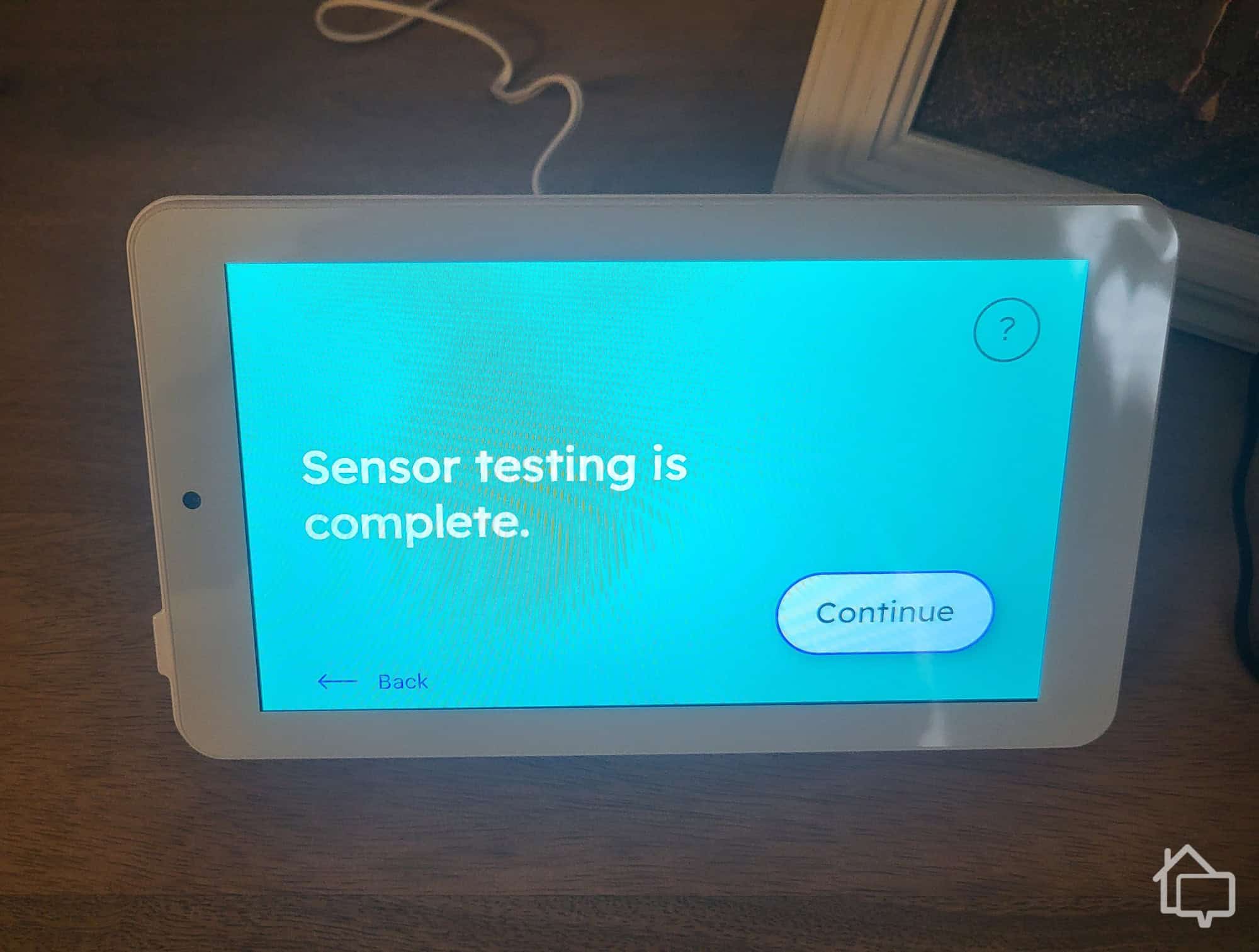
Sensor testing.
Cove requires monitoring, so you need to budget this monthly expense when you’re deciding if Cove is right for you. The company offers two plans: the Cove Basic plan and the Cove Plus plan. Here’s what you get with each.
| Features | Cove Basic | Cove Plus |
|---|---|---|
| Smartphone control | Yes | Yes |
| 24-hour battery backup (on hub and keypad) | Yes | Yes |
| Dual connection (cellular and Wi-Fi) | Yes | Yes |
| 24/7 customer support | Yes | Yes |
| InstaText fast response (text-based alerts) | Yes | Yes |
| Alarm verification (via phone, text, or app) | Yes | Yes |
| Fire, smoke, and flood detection | Yes | Yes |
| 24/7 live alarm monitoring | Yes | Yes |
| Camera support | No | Yes |
| Alexa and Google Home voice control | No | Yes |
| Equipment warranty | No | Yes |
| Price | $19.99 | $29.99 |
Pro Tip: Looking to save a little money? Go with the Cove Basic plan. It doesn’t include camera storage, but you can get free local storage through the Eufy app.
A few snafus in the ordering process are forgivable. We had hoped our system would ship immediately, but it ultimately arrived in a timely manner. Even the video doorbell showed up within a week. It was a bit inconvenient to have to call the monitoring center ourselves, but it gave us a chance to test Cove’s customer service.
Our only real complaint had to do with the camera installation. There’s really no excuse for the fact that we couldn’t get our three cameras to connect to the Cove app. Yes, there’s a work-around — we were able to access camera footage through the Eufy app — but “work-around” is not a word you want to hear when you’re dealing with home security. Luckily, that problem also got fixed, if not quite as quickly.
Even with those minor headaches, we still wholeheartedly recommend Cove. Very few companies offer such well-built equipment with so many features, even at much higher prices. The bottom line is that Cove packages are a real steal. Couple that with solid professional monitoring, and you have everything you could ask for in a home security company.
No, Cove does not allow customers to self-monitor their systems. You must choose between a Basic monitoring plan, which costs $19.99 per month, and a Plus plan, which costs $29.99 per month.
Yes, Cove now offers professional installation. Prices for the service start at $129.
The primary advantage of Cove’s Plus plan is that it provides support for video feeds. If your system includes cameras, you can access them only with the Plus plan. In addition, the plan includes support for both Alexa and Google Home, and it comes with a lifetime warranty on all equipment.
Yes, there are better home security systems than Cove. The best system out there is ADT. The company has 150 years in the industry and maintains a dozen monitoring centers across the U.S. ADT also offers the best equipment in the industry, including Google cameras, and the company has actually lowered prices over the past year. In addition, SimpliSafe and Vivint offer systems that are just slightly better than Cove’s.
One of the key downsides to Cove systems is the fact that the company doesn’t manufacture its own cameras. Instead, it offers Eufy devices. Eufy offers excellent cameras, but Cove’s use of third-party equipment sometimes creates problems in how well the various parts of the system communicate with one another. In addition, manufacturing its own cameras may allow Cove to offer lower prices on the devices.